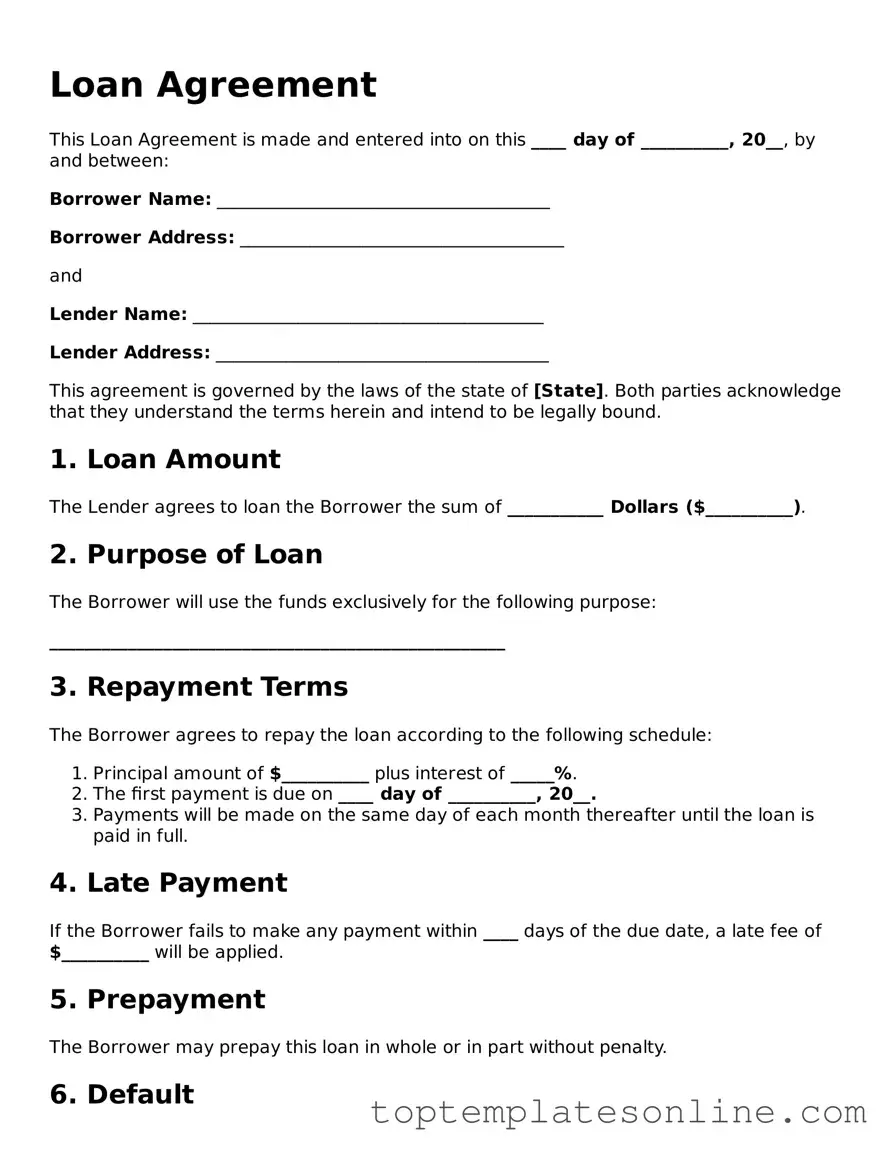Attorney-Approved Loan Agreement Form
A Loan Agreement form is a legal document that outlines the terms and conditions of a loan between a borrower and a lender. It serves as a binding contract, detailing the amount borrowed, repayment schedule, and any interest rates involved. Understanding this form is essential for both parties to ensure clarity and protect their rights throughout the lending process.
Customize Loan Agreement Here
